5 Front End Challenges & How Retail is Reinventing the Future of Brick and Mortar
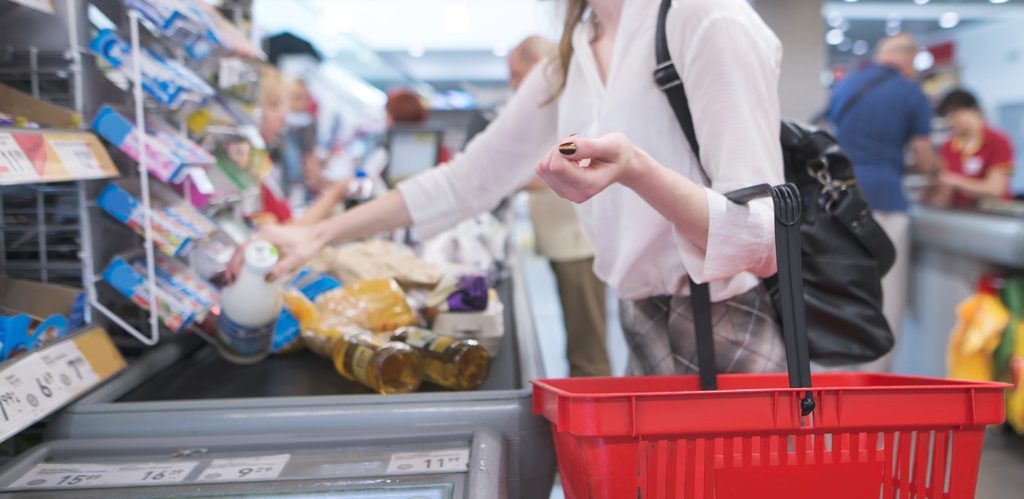
New technologies and consumer behaviors have made retailers realize they need to quickly reinvent the in-store experience at checkout.
Consumer behaviors rapidly changed during the pandemic and impacted the retail front end as it is considered a high contact area. Fear to touch checkout merchandise and machines has led to poor front end performance that was already in need of optimization.
According to a recent study by The Harris Poll, 84% of shoppers plan to head back to physical stores after all COVID-19 restrictions are lifted. These consumers say that they are likely to shop for everyday purchases in-person or online with a major retailer.
Although safety is currently their top concern, stores will be facing greater front end challenges as customers return to their traditional daily trips.
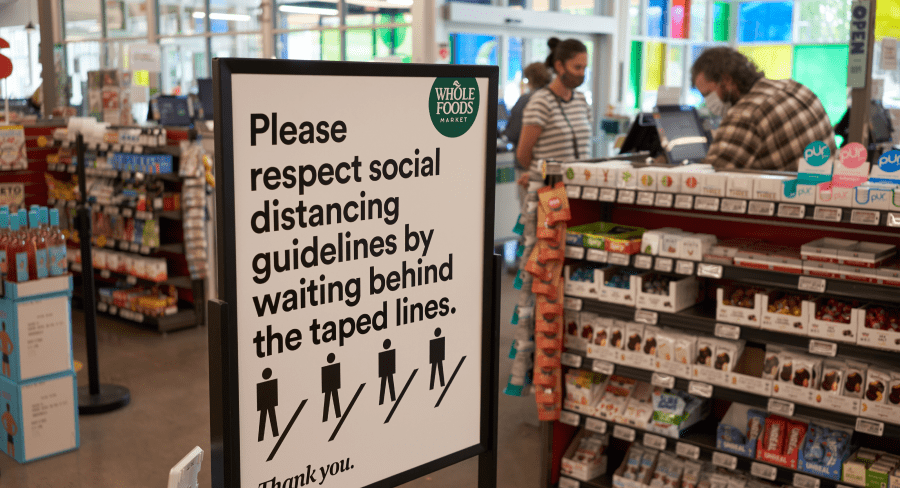
What is Challenging Front End Operations in Retail
Even before the Covid-19 pandemic, retail front end operations were experiencing issues establishing positive customer experiences. According to Hershey’s Voice of the Industry: The Future of the Front End, the store front end faces continuous disruption. These front of store challenges include: Digital Disruption, Leaner Labor Models, Expectations of Flexibility and Ease, Proper Space Allocation and Profitability Per Square Inch.
1. Digital Disruption
New technologies and trends present a digital disruption that is altering front end retail operations and customer behaviors. The growth of online shopping and social media are influencing the future of brick and mortar. Consumers expect their in-store shopping experience to be cohesive with what they see online. They also desire numerous ways to complete transactions.

2. Leaner Labor Models
One of the greatest retail challenges is labor expenses. Many companies are becoming more efficient by using a leaner labor model at the front end. In fact, the Big Box retailer Walmart is testing out an all self-checkout supercenter. While some are concerned about declining customer service and eliminating jobs, consumers are noticing that checkout lines are moving faster.
Del LaCount, ReadySet VP of Assets, has extensive experience in examining retailer layouts and planograms. He witnesses different iterations of the retail front end and wonders how this Plano test store compares to his local Walmart in East Green Bay. “It has moved to a similar layout but with four traditional check lanes that split the self-checkout area into two halves”.
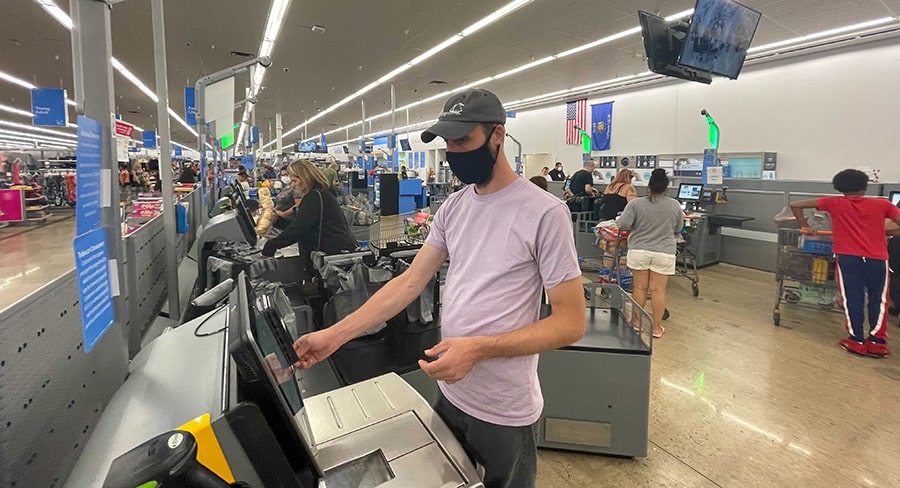
LaCount believes “retailers will really need to find a balance. This will likely require incorporation of self-checkout and traditional lanes or hybrid lanes featuring the functionality of a belt yet manned by the consumer. Not all store formats will find the same effective mix.”
3. Expectation of Flexibility and Ease
The front of a grocery store has always been a pain point for customers and a focus of optimization for retailers. The convenience of online shopping has made shoppers more aware and less tolerant of stressful, long lines at in-store checkouts.
This leads to an inflated consumer demand for flexible payment options and quick, easy checkout experiences. The race to develop an easier front end can be seen from retailers today. For example, there is now an Amazon supermarket with Just Walk Out checkout-free technology.
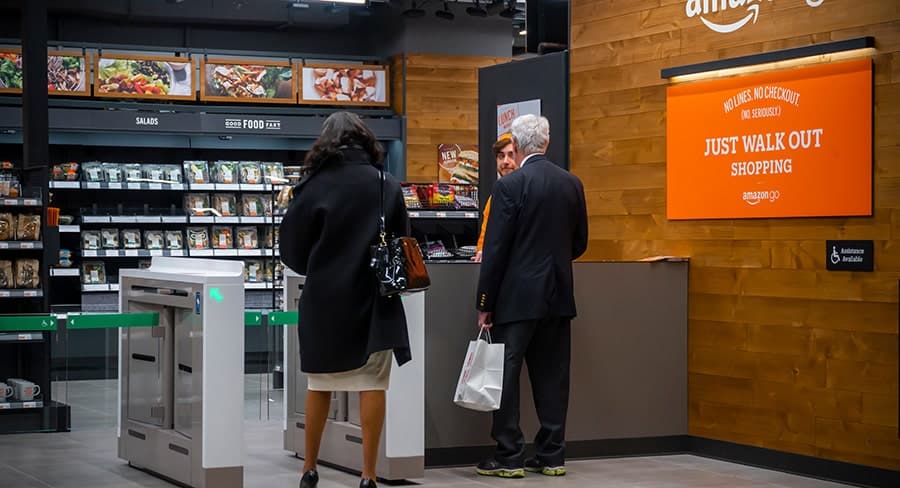
4. Proper Space Allocation
Another challenge is that there is not a proper allocation of space at the front of stores. Big Box retailers have double digit checkout lanes vacant, while only a handful are in operation with cashiers. These unused checkout lanes take up critical retail space that could be used to display more merchandise or provide customers with a better retail experience.
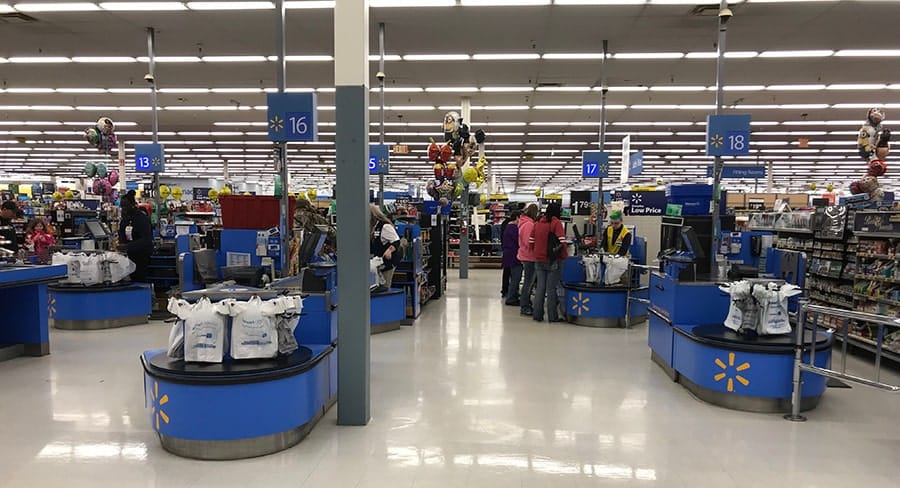
5. Profitability of Every Square Inch
The front of store display is often the most profitable area for most retailers. In fact, the front end can be 10 times as profitable per square foot as the remainder of the store. To maximize profitability, front end retail display ideas need to most effectively use this retail space. Retailers can measure sales per square foot to understand what front end merchandising layouts perform well and what needs improvement.
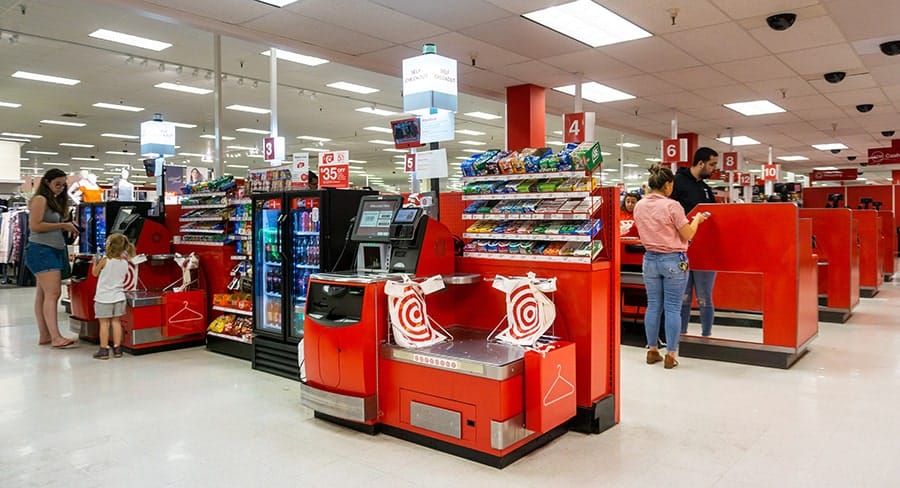
How to Create the Future of Retail Stores
Steve McLean, CEO of Wild Blue Technologies and ReadySet, has over 20 years of retail experience assisting in the success of Fortune 500 companies. When asked about his take on the front end evolution, McLean pointed out the barriers he has witnessed and how he believes the industry will move forward.
“There is an impressive list of concurrent variables contributing to the rapid evolution of front of store strategy.
Transaction and payment technology advances, pandemic driven safety protocols, evolving customer expectations, increased footprint of self-checkout, digital commerce adoption rates, BOPIS, curbside, same day delivery, 3rd party shopping entities and basket size variability must all be considered when optimizing the front end for the future. This confluence of conditions has created an unprecedented velocity of change at the front of the store.
Retailers and manufacturers will need to be insight driven and nimble to deliver a positive customer experience, mitigate complexity and also preserve incremental impulsive sales that occur at the point of transaction.”
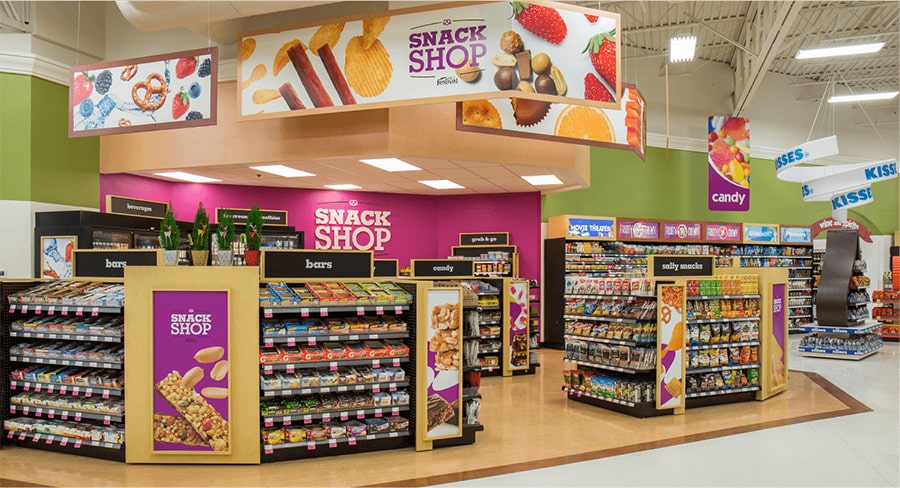
The checkout experience is the 3rd most important factor in creating customer loyalty. This means that establishing positive checkout experiences is a crucial factor in the future of brick and mortar retail stores. To do so, organizations are understanding the importance of front end innovation.
Front End Innovation
The only way to identify growth and optimization opportunities is through strategic innovation. This process typically involves costly in store testing or physical innovation labs where sets are constructed and research is performed.
Unfortunately, these traditional innovation processes don’t accommodate for the speed of changing consumer behaviors. In order to accelerate their innovation projects, companies are embracing new front end retail solutions to innovate and solve problems faster.
Virtual Reality in Retail
The retail industry is utilizing eye-tracking VR technology to efficiently develop and test checkout experiences. These tools offer a fast and cost-effective way to innovate new front of store layouts and queueing strategies. Virtual reality is also the perfect solution for creating experiential environments. There is no limit to the amount of idea iterations that can be produced in VR.
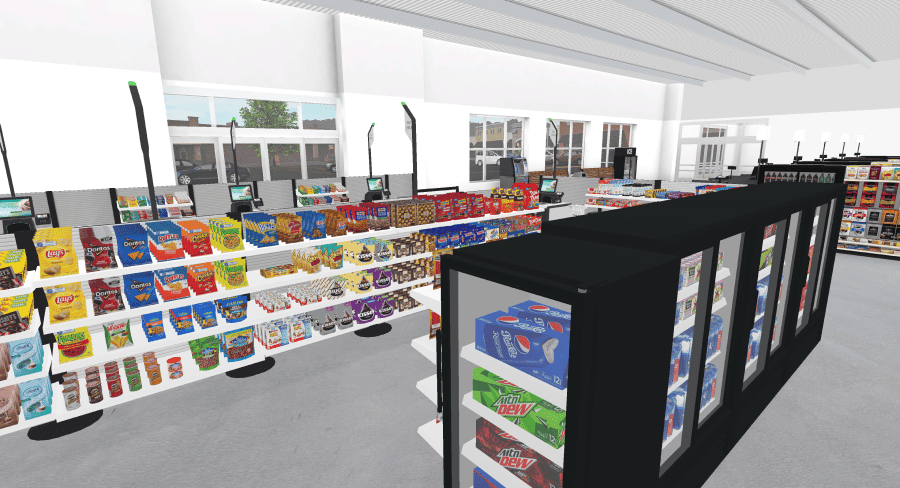
A virtual reality front end builder provides a platform for building custom grocery store checkout areas and queue lines. These virtual environments can be easily studied to identify a more frictionless experience. Research is done using eye-tracking VR headsets that gain accurate customer insights. The shopper-approved ideas can then be implemented in-store to improve checkout flow and optimize merchandising that increases sales.
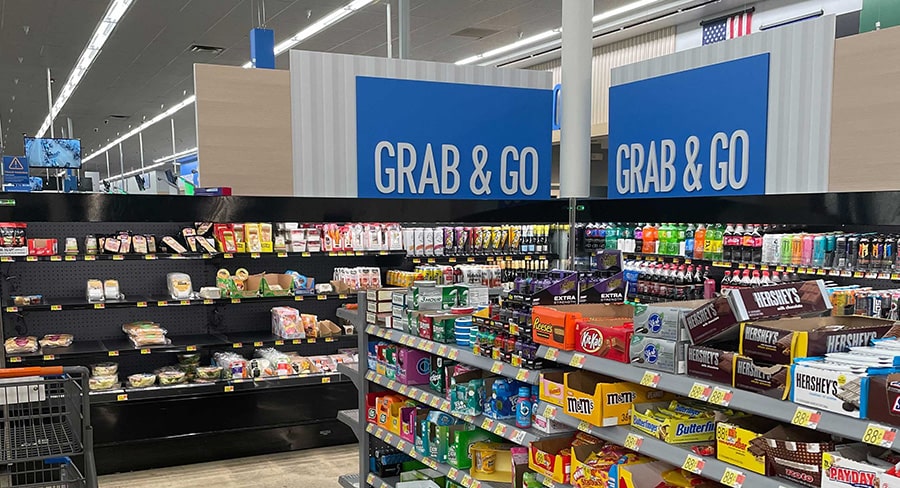
Virtual reality is a constantly advancing technology that can provide manufacturers and retailers with competitive advantage. This process provides a faster path to discover and present stakeholders optimal front end retail solutions. Brands can take advantage of VR retail innovation to create better customer experiences that get in market more quickly.
Subscribe to our newsletter
Get our blogs and the latest retail news delivered to your inbox monthly.
Recent Posts
5 Holiday Shopping Predictions & Recommendations for 2021
The pandemic greatly influenced celebrations and holiday shopping in 2020, but with normalcy on the horizon there are different 2021 holiday predictions that retailers should consider. Last year, the Covid-19 pandemic led to a decrease in holiday social gatherings. Although there were less family holiday celebrations and religious services, traditions such as decorating, gifts and…
Eye-Tracking VR Technology is Changing the Retail Industry
Retailers use virtual reality to conduct eye tracking consumer research that uncovers accurate shopper insights. The pandemic and rapid digital transformation in retail is pressuring brands to innovate and adapt their shopping experiences based on changing consumer behaviors. In order to quickly collect and understand consumer insights, many organizations have turned to virtual reality. Virtual…
7 Retail Industry Trends to Watch Out for in 2021
Today, the rapid advancements in technology have led to almost every facet of our lives shifting online, catering to a population that is more adaptive to the current times. The retail industry is no exception. The current world situation has vastly impacted retail industry trends in 2021, with an increasing number of people resorting to…


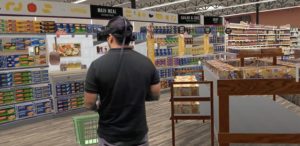
[…] store checkout has always been one of the greatest pain points for shoppers. Front end challenges are due to many factors, some of which include long lines or new health and safety concerns. This […]